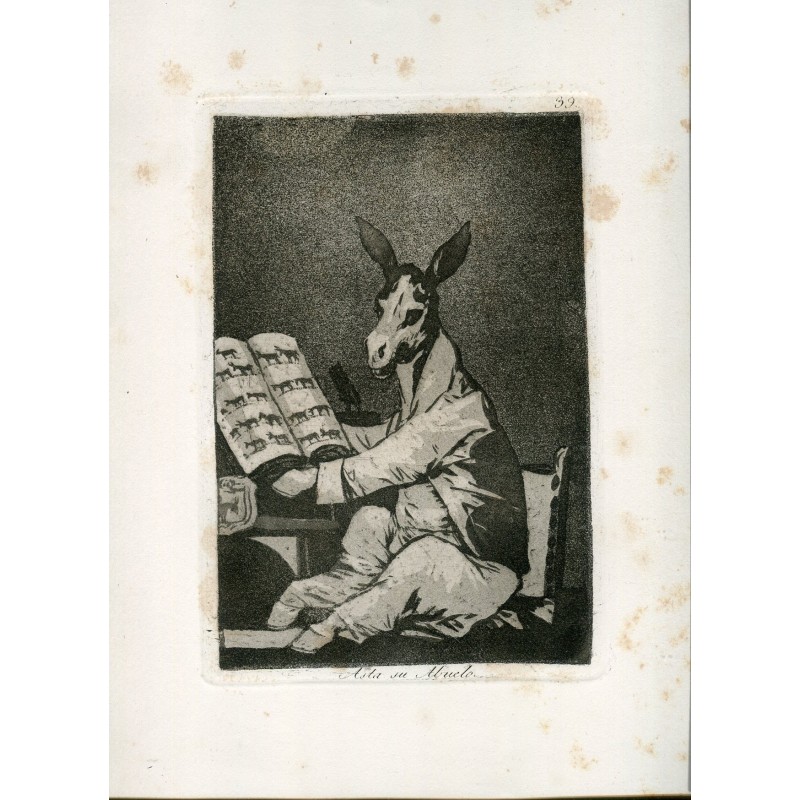Francisco de Goya y Lucientes. 'Asta su abuelo' (And so was his grandfather). Plate 39 from Los Caprichos. 5th edition (1881-1886)
This fifth edition of Los Caprichos was printed between 1881 and 1886 in the Calcografía de la Real Academia, stamped in etching and aquatint and with drypoint, in soft sepia ink. The plates were beveled and the binding was done at the top of the prints. The edition consists of 210 copies. Very clean and correct tinted stamping; aquatint allows shadows to be nuanced by creating grayscale gradation and dramatic, haunting lighting. The strong paper used does not have a water mark as usual as Harris catalogs it. The original folder in which the complete collection was presented was made of cream cardboard with the portrait of Goya stamped on the cover and the Title: “Fran.co Goya y Lucientes Pintor”.
'Asta su abuelo' (Plate 39) is part of The Caprichos. In this Capricho Goya resorts to the so-called asnerías, many of them interpreted as the personification of Manuel Godoy. The print depicts a seated literary donkey in bedding, proudly studying a lineage of at least seventeen ancestors, all donkeys. Through this scene Goya ridicules the absurd genealogical tree that was prepared for the Prince of Peace, making him a descendant of the Goth kings of Spain related to strange marriages with the royal family. It is true that to justify his rapid ascent, Manuel Godoy found genealogists who sought the most venerable origins for him. A chapter of the Memoirs of the prince is destined to reject the low origin that was lent to him, without taking into account the truth.
Plate size: 15x21,5 cm.
Paper size: 26x36.5 cm.
It has rust stains that can be seen in the image.
Los caprichos (The Caprices) is a set of 80 prints in aquatint and etching created by the Spanish artist Francisco Goya in 1797-1798, and published as an album in 1799 (first edition). The prints were an artistic experiment: a medium for Goya's condemnation of the universal follies and foolishness in the Spanish society in which he lived.
Thirteen official editions are known: that of 1799, five in the 19th century, and seven in the 20th century. Being the last one in 1970 carried out by the Royal Academy of Fine Arts of San Fernando.


